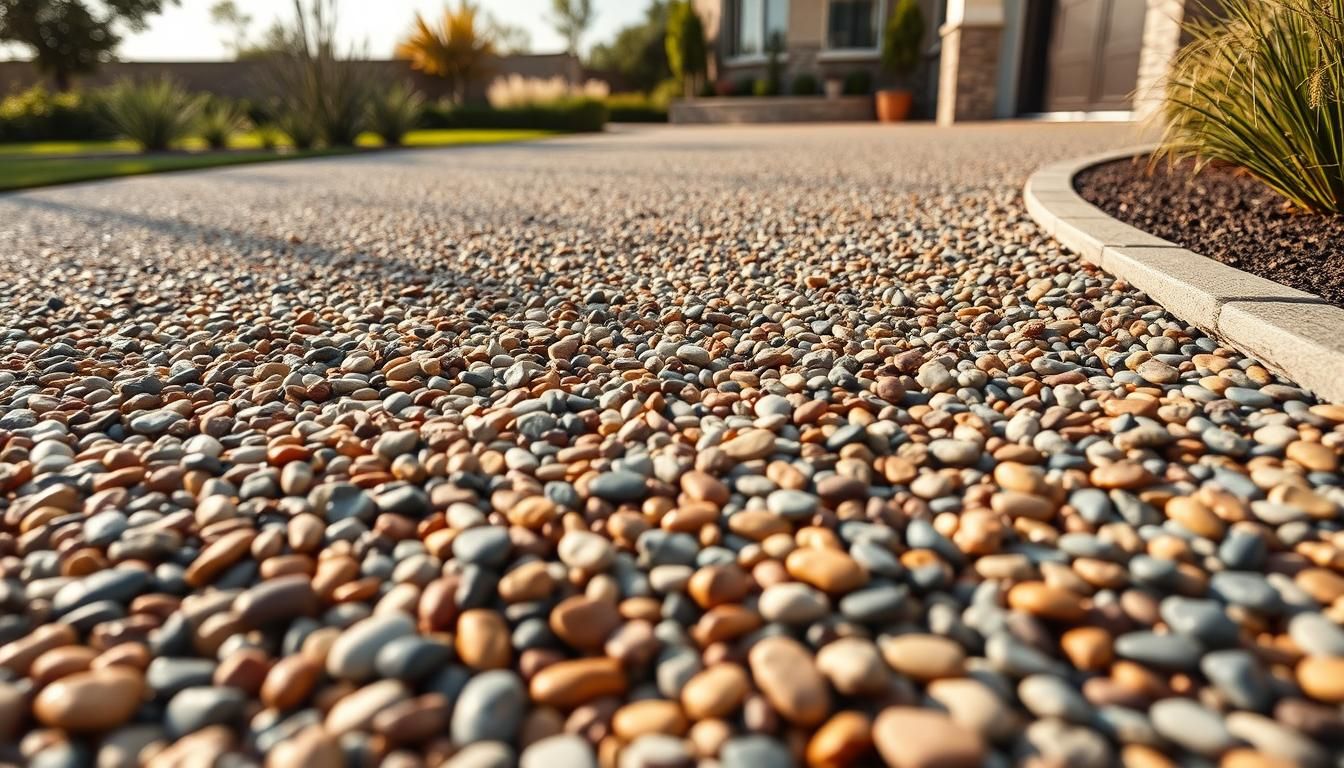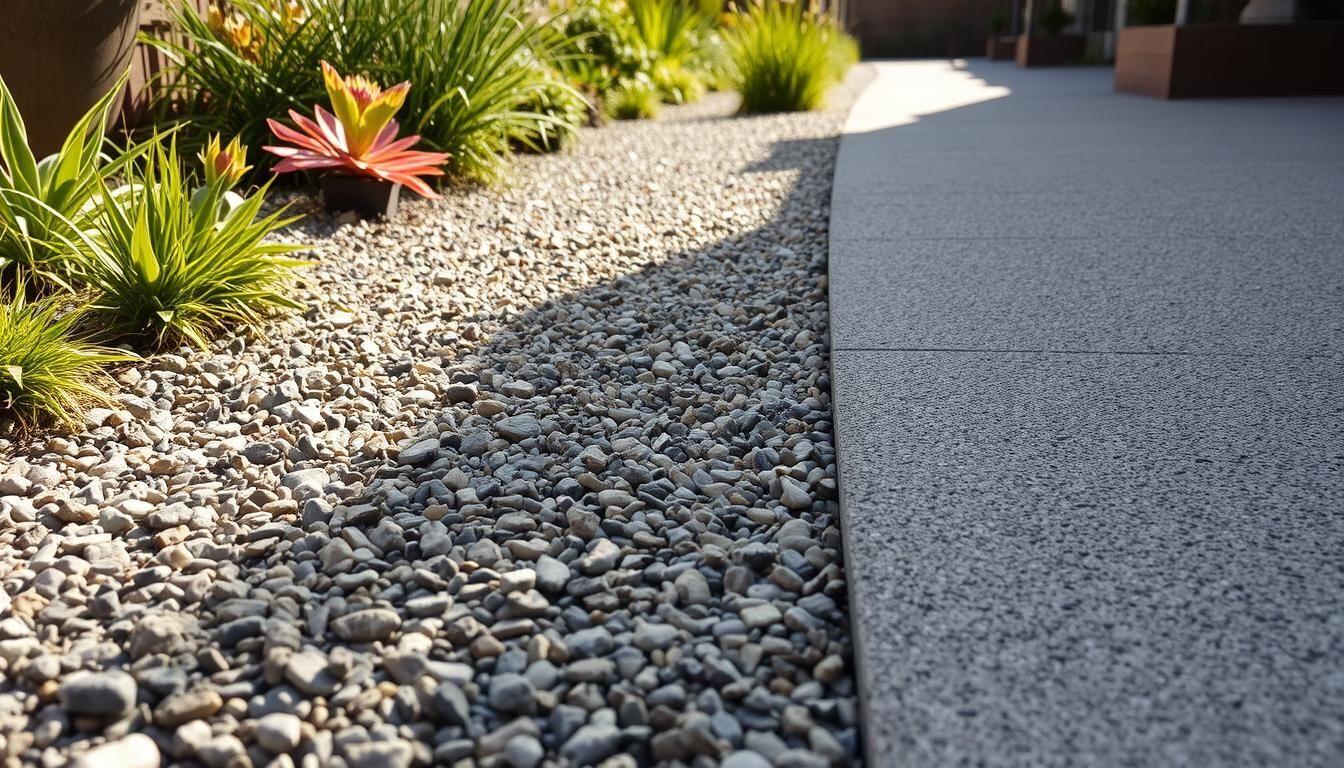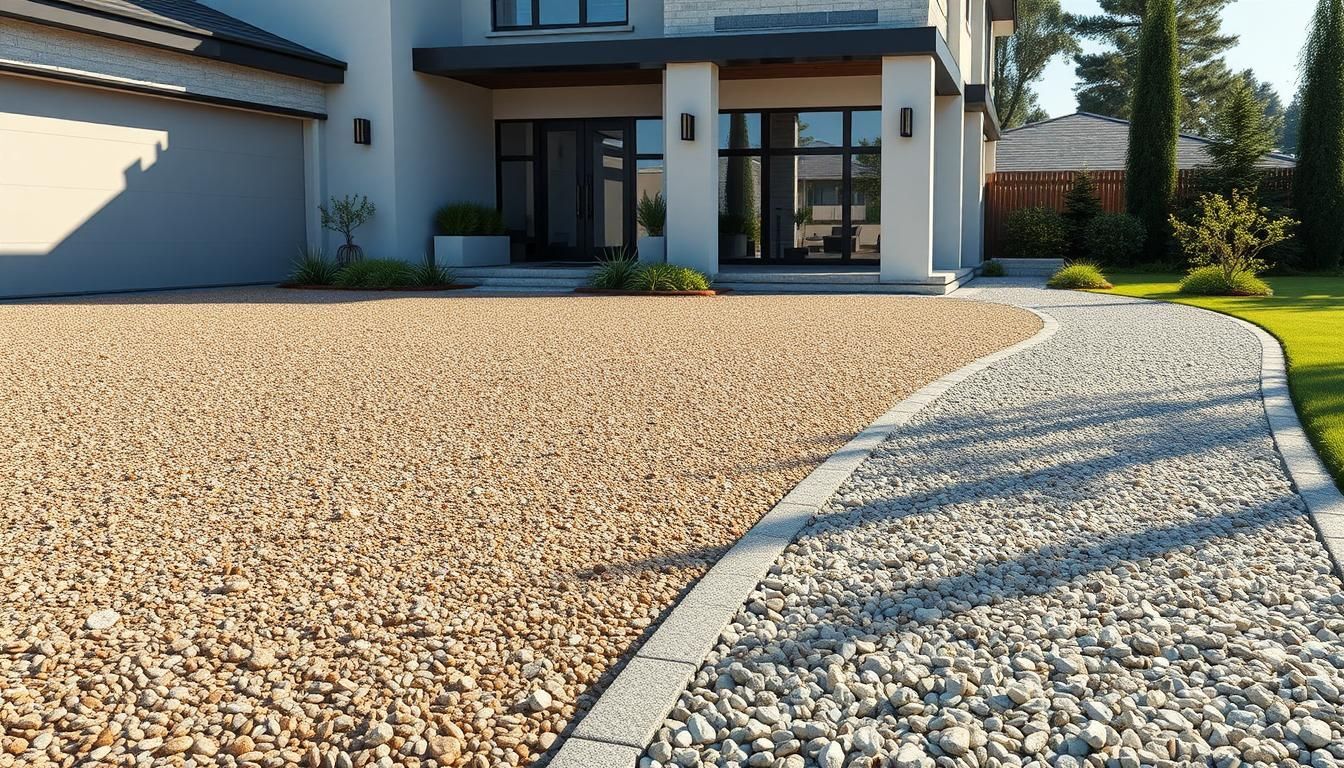Modern outdoor surfaces demand both functionality and aesthetic appeal. Resin bound gravel and resin bonded gravel represent cutting-edge solutions that deliver exceptional durability, visual impact, and minimal maintenance requirements. Whether you're planning residential driveways, commercial pathways, or decorative terraces, understanding the right resin for resin bound gravel is fundamental to project success.
Understanding the critical differences: resin bound vs. resin bonded gravel
The distinction between these two systems goes far beyond simple terminology. Resin bound gravel involves thoroughly mixing natural aggregates with specialized polyurethane or epoxy resin, creating a homogeneous, monolithic surface. Every stone becomes completely encapsulated in resin, resulting in a smooth, permeable, and structurally uniform finish that can handle significant loads.
Installation requires a thickness of 15–22 mm for standard applications, with the finished surface capable of supporting up to 7.5 tonnes when properly installed over suitable substrates. This makes resin bound systems ideal for driveways, commercial car parks, and high-traffic pedestrian areas where both performance and aesthetics matter.
Resin bonded gravel takes a different approach entirely. Here, resin is first applied to the prepared surface, followed by broadcasting loose aggregate on top. The result is an attractive, textured finish where individual stones remain visible and create natural surface variation. Installation thickness typically measures around 5mm depending on aggregate size, making this system perfect for decorative applications where visual impact trumps heavy-duty performance.
The load capacity suits pedestrian traffic and light vehicular use, making resin bonded surfaces excellent choices for garden pathways, patio areas, and decorative commercial spaces where foot traffic predominates.
Selecting the right resin: professional considerations
The choice of resin for resin bound gravel directly determines performance, longevity, and maintenance requirements. Professional installers typically work with two primary resin systems, each offering distinct advantages for specific applications.
Polyurethane resin systems excel in residential and moderate commercial applications. These formulations provide UV-stable performance that prevents color degradation over time, while their flexible properties accommodate natural thermal expansion and contraction. The superior water permeability makes polyurethane ideal for areas requiring effective drainage, such as swimming pool surrounds and sloped driveways. Most systems come in convenient 1:1 mixing ratios that simplify field application.
Epoxy resin systems deliver exceptional performance for demanding commercial installations. Their rapid curing properties minimize installation downtime—critical for busy commercial environments. The exceptional compressive strength handles heavy loads effectively, while chemical resistance proves valuable in industrial settings or areas exposed to automotive fluids. However, epoxy systems require precise mixing and careful temperature control during application.

Professional installation: the foundation of success
Successful resin gravel installation begins long before the first bucket of resin opens. Base preparation represents the most critical phase, requiring a solid concrete or asphalt substrate with proper drainage falls of 1-2%. The surface must be completely clean, dry, and structurally sound—any compromise here will manifest as premature failure later.
Environmental conditions during installation cannot be overlooked. Optimal temperature ranges between 10°C and 25°C ensure proper curing, while low humidity levels prove critical for achieving strong adhesion. Professional installers avoid working during rain or high humidity periods, as moisture contamination can severely compromise the finished surface.
The mixing process demands precision and speed. Resin components require thorough mixing using drill paddle mixers for approximately 2-3 minutes, followed by aggregate incorporation using mechanical mixers for 3-5 minutes. Standard coverage typically achieves approximately 3.55m² per kit when laid at 18mm thickness, with most professionals recommending a 10% over-order to account for surface variations.
Working time becomes critical once mixing begins—immediate application prevents premature curing that would waste materials and compromise surface quality. Professional trowel finishing ensures the smooth, uniform appearance that distinguishes quality installations from amateur attempts.
Performance characteristics that matter
Curing timeline affects project scheduling significantly. Initial cure occurs within 24 hours under standard conditions, though colder temperatures extend this period considerably. Full strength development requires this initial curing period, after which the surface can handle specified loads safely.
The finished surface delivers measurable performance benefits that justify the investment. Water permeability prevents standing water and ice formation—particularly valuable in climates with freeze-thaw cycles. Temperature resistance typically spans from -20°C to +60°C, ensuring year-round performance across most geographic regions.
Surface safety represents another crucial consideration. Quality installations provide reliable slip resistance, though specific coefficients vary based on aggregate selection and surface finish techniques. This makes resin bound surfaces particularly suitable for areas where pedestrian safety requires priority attention.
Aesthetic and practical advantages
Design flexibility sets resin gravel systems apart from traditional paving options. The extensive range of available aggregate colors, sizes, and textures allows customization that complements any architectural style. Natural stone aggregates provide authentic texture and color variation, while manufactured options offer consistent appearance and specialized properties.
Maintenance requirements remain refreshingly minimal compared to alternative surfacing options. Regular sweeping removes surface debris, while annual pressure washing using moderate settings (maximum 100 bar recommended) maintains appearance and performance. The sealed surface naturally resists weed growth, eliminating the ongoing maintenance burden associated with traditional gravel surfaces.
Professional installations typically provide 15-20 years of service life under normal residential use, with commercial applications potentially requiring earlier refurbishment depending on traffic intensity and environmental exposure. This longevity, combined with minimal maintenance requirements, delivers excellent long-term value.
Application-specific professional recommendations
Residential applications benefit from careful system selection based on intended use. Driveways require minimum 18mm depth installations using resin bound systems to handle vehicular traffic safely. Garden pathways and pedestrian areas can utilize 15mm minimum depth, while decorative patios and terraces often suit resin bonded systems where visual impact takes precedence over structural performance.
Commercial projects demand more robust specifications. Car parks require resin bound systems with reinforced substrates and professional load calculations. Public pedestrian areas benefit from either system depending on aesthetic requirements and budget considerations. Shopping centers, office complexes, and educational facilities increasingly specify resin bound surfaces for their combination of durability, safety, and visual appeal.

Professional installation vs. DIY: making the right choice
While DIY kits exist in the marketplace, professional installation provides significant advantages for substantial projects. Professional contractors bring substrate assessment expertise, proper mixing equipment, and weather condition optimization that directly impacts long-term performance. Quality assurance and warranty coverage provide additional value that often justifies the investment.
For projects exceeding 50m² or involving structural loads, professional installation becomes particularly valuable. The expertise, specialized equipment, and guaranteed performance provide peace of mind that proves worthwhile over the surface's expected lifespan.
Troubleshooting common installation challenges
Substrate issues represent the primary cause of premature failure in resin gravel installations. Poor drainage, structural movement, or contaminated surfaces create problems that become expensive to rectify later. Professional assessment identifies potential issues before they compromise the finished surface.
Weather-related problems frequently affect DIY installations. Temperature and humidity significantly influence curing characteristics, with cold conditions requiring special accelerators and high humidity demanding extended curing periods. Professional installers understand these variables and adjust procedures accordingly.
Quality control during mixing and application prevents installation defects that become apparent weeks or months later. Consistent proportioning, thorough mixing, and immediate application represent skills that develop through experience and proper training.
Making the investment decision
Resin bound gravel and resin bonded gravel offer compelling solutions for property owners seeking durable, attractive, low-maintenance surfaces. Success hinges on appropriate material selection, professional installation techniques, and clear understanding of performance expectations for specific applications.
The right resin for resin bound gravel, combined with proper installation practices, delivers decades of reliable performance and lasting aesthetic appeal. Whether enhancing residential properties or upgrading commercial facilities, these modern surfacing solutions provide exceptional value through their unique combination of functionality, beauty, and longevity.
Professional consultation ensures optimal material selection and installation techniques tailored to your specific project requirements, environmental conditions, and performance expectations. The investment in expert guidance and installation typically pays dividends through extended service life and reduced maintenance costs over time.
